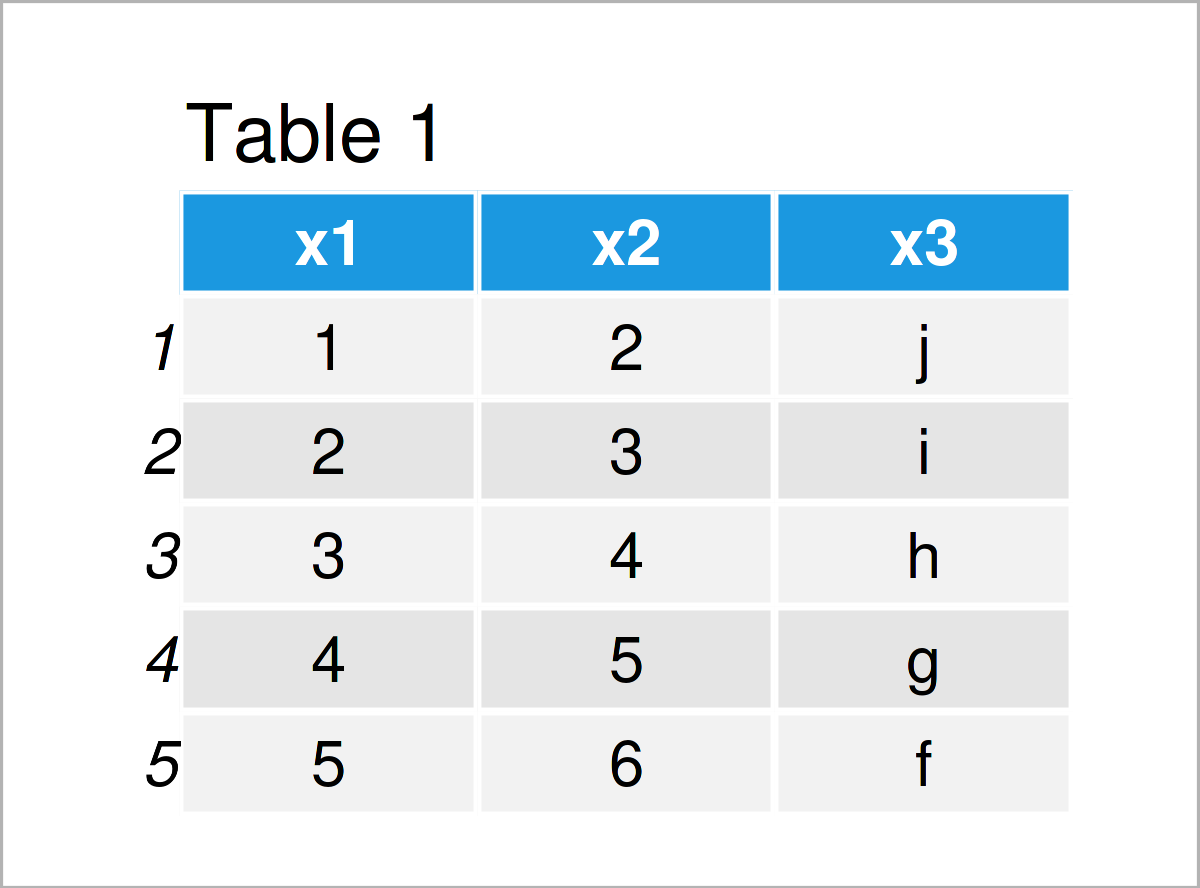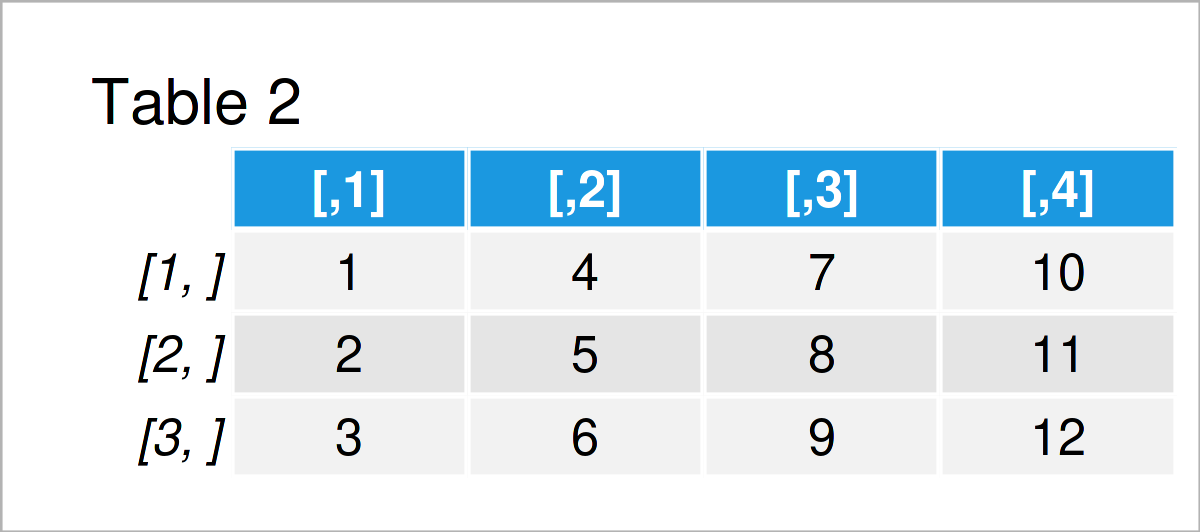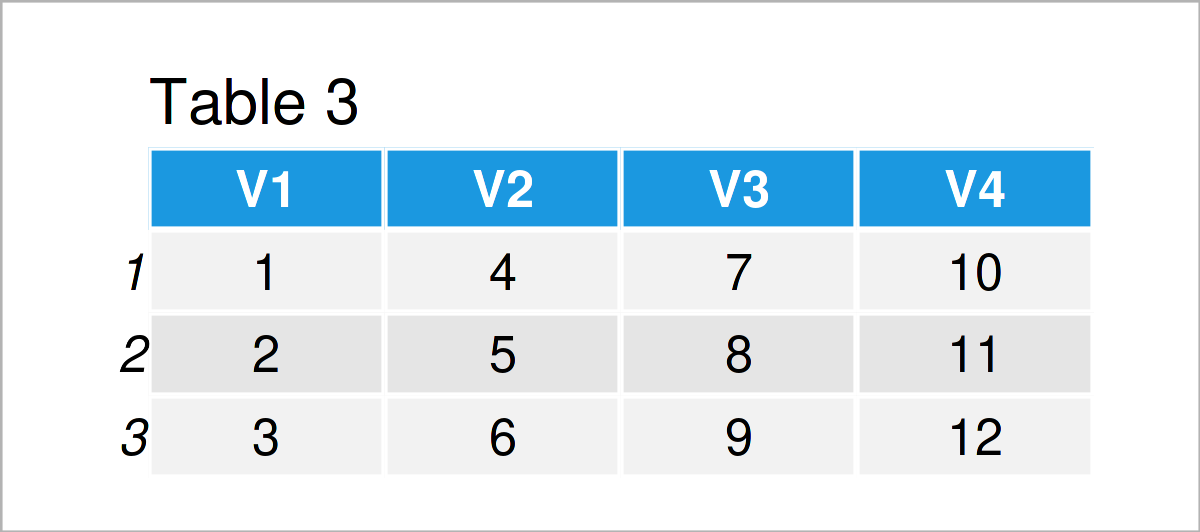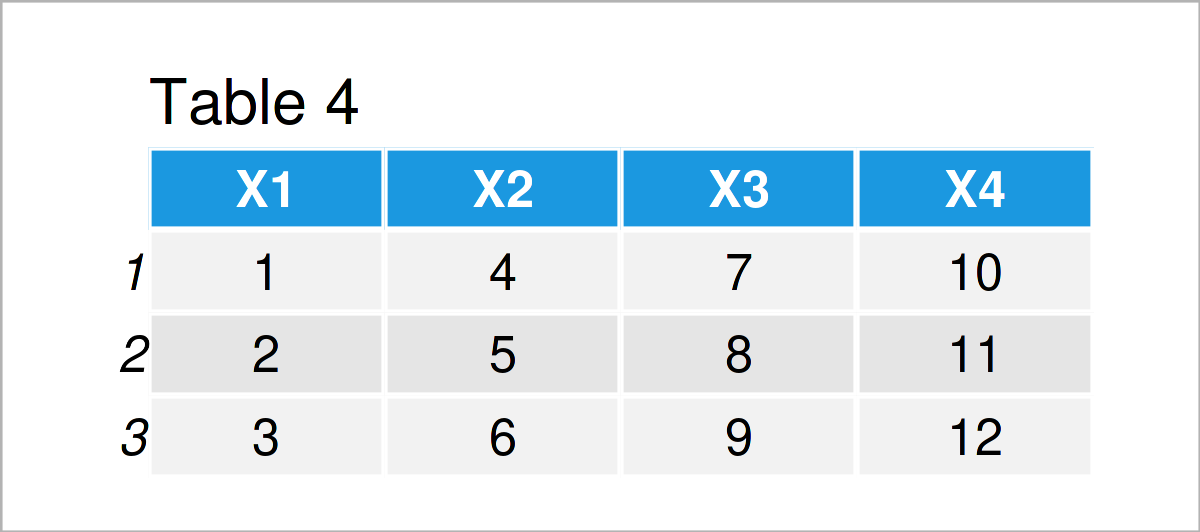Difference Between data.frame & as.data.frame Functions in R (2 Examples)
In this post, I’ll demonstrate how to apply the data.frame and as.data.frame functions in the R programming language.
Table of contents:
Let’s just jump right in:
Example 1: Create Data Frame Using data.frame() Function
In Example 1, I’ll demonstrate how to use the data.frame function in R. Usually, the data.frame function is used to construct a new data object with the data.frame class.
Have a look at the R code below. In this syntax, we specify several columns (i.e. x1, x2, and x3) within the data.frame function. Furthermore, we are storing the output of the data.frame function in a new data object called data1.
data1 <- data.frame(x1 = 1:5, # Create data frame x2 = 2:6, x3 = letters[10:6]) data1 # Print data frame

The output of the previous syntax is shown in Table 1 – A new data frame containing three variables with different values.
Example 2: Convert Matrix to Data Frame Using as.data.frame() & data.frame() Functions
In Example 2, I’ll demonstrate how to apply the as.data.frame function. The as.data.frame function is typically used to coerce data sets with other classes to the data.frame class.
Let’s first create a matrix object:
mat <- matrix(1:12, ncol = 4) # Create matrix mat # Print matrix

In Table 2 it is shown that we have created a matrix containing three rows and four columns.
Now, we can use the as.data.frame function to convert this matrix to the data.frame class:
data2 <- as.data.frame(mat) # Convert matrix to data frame data2 # Print data frame

By executing the previous R code, we have created Table 3, i.e. a data frame containing the values of our input matrix.
Note that we could also use the data.frame function to convert a matrix to a data.frame (even though this is not the main purpose of the data.frame function):
data3 <- data.frame(mat) # Convert matrix to data frame data3 # Print data frame

The output of the previous R code is shown in Table 4 – Another data frame with the same values. Note that the variable names of this data frame are different compared to the data frame created by the as.data.frame function.
Video, Further Resources & Summary
Some time ago, I have published a video on my YouTube channel, which illustrates the R programming code of this post. Please find the video below:
Besides that, you might read some of the related articles on this homepage:
- Create Data Frame Row by Row in R
- Subset Data Frame Rows Based On Factor Levels
- Select Data Frame Rows based on Values in Vector
- Built-in R Commands (Programming Examples)
- All R Programming Examples
This article has demonstrated how to use the data.frame and as.data.frame functions in the R programming language. Tell me about it in the comments section, in case you have any additional comments or questions. Furthermore, please subscribe to my email newsletter to get updates on the newest tutorials.






